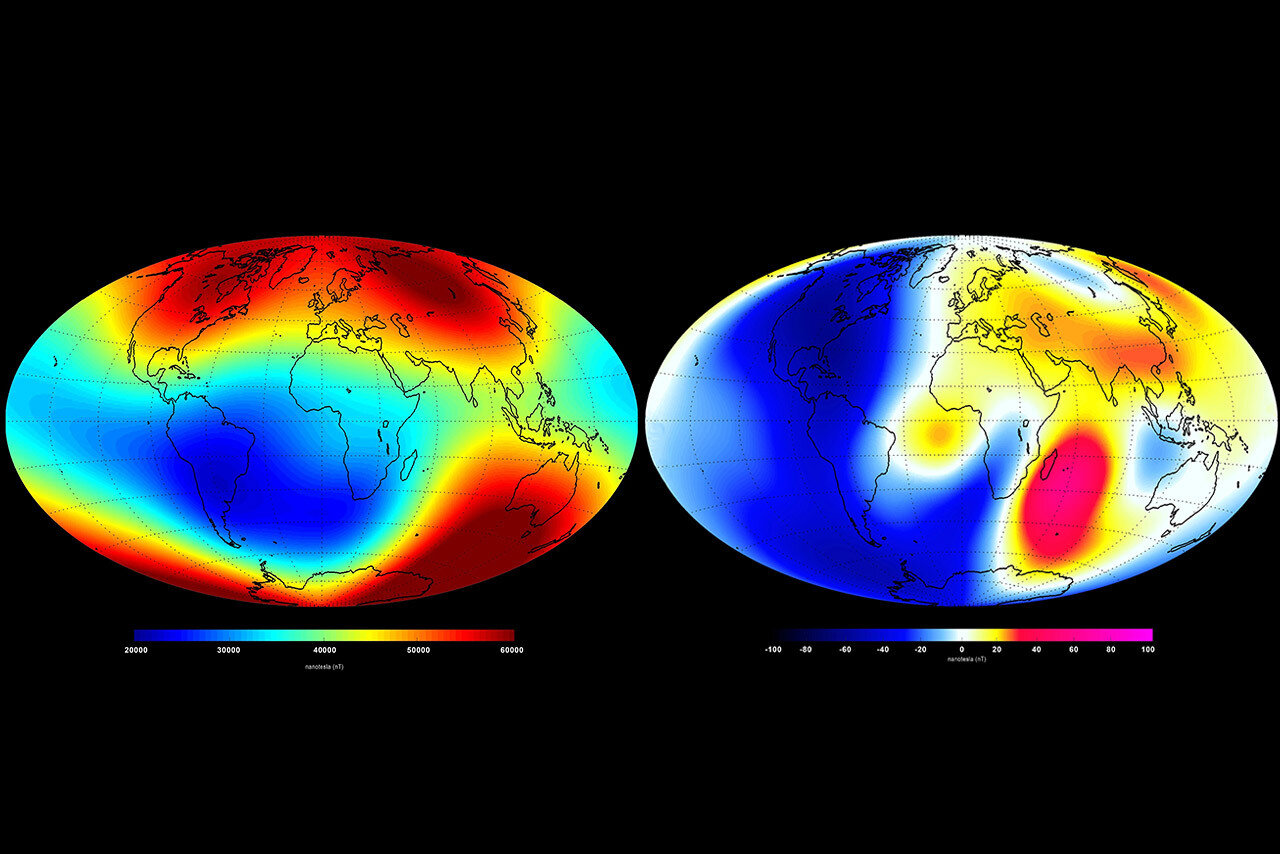Elastic turbulence has more in common with classical Newtonian turbulence than expected, scientists reveal
Polymer stretching in elastic turbulent flow. The polymers in the liquid act like micro-springs that stretch as the liquid moves before releasing energy back to the liquid when they contract. Credit: Prof. Marco E. Rosti/OIST
x close
Polymer stretching in elastic turbulent flow. Polymers in the liquid act like microsprings that stretch as the liquid moves before releasing energy back to the liquid when they contract. Credit: Prof. Marco E. Rosti/OIST
Blood, lymphatic fluid and other biological fluids can have surprising and sometimes disturbing properties. Many of these biological solutions are non-Newtonian fluids, a type of fluid characterized by a nonlinear relationship between stress and strain. As a result, non-Newtonian fluids do not necessarily behave as a fluid would be expected. For example, some of these special fluids will deform with a light touch, but will act almost like a solid when a strong force is applied.
And biological solutions are no exception when it comes to unique properties – elastic turbulence being one of them. A term that describes the chaotic fluid motion that results from the addition of polymers in small concentrations to aqueous liquids. This type of turbulence only exists in non-Newtonian fluids.
Its counterpart is classical turbulence, occurring in Newtonian fluids, for example in a river, when water flows at high speed around a bridge pillar. While there are mathematical theories that describe and predict classical turbulence, elastic turbulence still awaits such tools, despite their importance for biological samples and industrial applications.
“This phenomenon is important in microfluidics, for example when mixing small volumes of polymer solutions, which can be difficult. They do not mix well because of the very smooth flow,” explains Prof. Marco Edoardo Rosti, Head of Complex Fluids and Flows. Unit.
Until now, scientists have considered elastic turbulence to be quite different from classical turbulence, but the Lab’s publication in the journal The nature of communication can change that view. OIST researchers collaborated with scientists from TIFR in India and NORDITA in Sweden to reveal that elastic turbulence has more in common with classical Newtonian turbulence than expected.
“Our results show that elastic turbulence has a universal power-law decay of energy and hitherto unknown intermittent behavior. These findings allow us to look at the problem of elastic turbulence from a new angle,” explains prof. It’s growing. Scientists often use velocity fields to describe flow. “We can look at the distribution of velocity fluctuations to statistically predict the flow,” says Dr. Rahul K. Singh, first author of the publication.
When studying classical Newtonian turbulence, scientists measure the velocity throughout the flow and use the difference between two points to create a velocity difference field.
“Here we measure the velocity at three points and calculate the second differences. First, the difference is calculated by subtracting the fluid velocities measured at two different points. Then we subtract two such first differences again, which gives us the second difference,” explains Dr. Singh.
This type of research has come with an additional challenge – running these complex simulations requires the power of advanced supercomputers. “Our simulations sometimes run for four months and produce huge amounts of data,” says Prof. It’s growing.
This added level of detail led to a surprising finding – that the velocity field in elastic turbulence is discontinuous. To illustrate what intermittent flow looks like, Dr. Singh as an example of an electrocardiogram (ECG).
“When measuring an ECG, the signal has small fluctuations interrupted by very sharp peaks. This sudden large burst is called intermittency,” says Dr. Singh.
For classical fluids, such fluctuations between small and very large values have already been described, but only for turbulence occurring at high flow velocities. The researchers were surprised to now find the same pattern in elastic turbulence, which occurs at very small flow velocities. “At these low velocities, we did not expect to find such strong fluctuations in the velocity signal,” says Dr. Singh.
Their findings are not only a major step towards a better understanding of the physics behind low-speed turbulence, but also lay the foundations for the development of a complete mathematical theory describing elastic turbulence. “With a perfect theory, we could predict flow and design devices that can change the mixing of liquids. This can be useful when working with biological solutions,” says Prof. It’s growing.
More information:
Rahul K. Singh et al., Intermittency in the not-so-smooth elastic turbulence, The nature of communication (2024). DOI: 10.1038/s41467-024-48460-5
Information from the diary:
The nature of communication














Post Comment